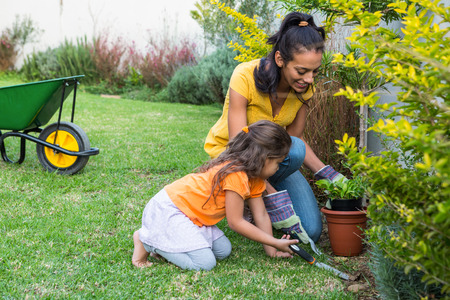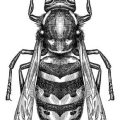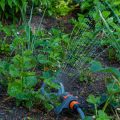Understanding Common Garden Wildlife in the U.S.
American home gardens can be a magnet for various types of wildlife. While some critters may seem cute or harmless, many can cause significant damage to your plants, fruits, and vegetables. Knowing which animals are most likely to visit your garden is the first step in creating effective barriers to keep them out.
Typical Wildlife That Impact American Gardens
Below is a quick overview of common animals that gardeners across the United States frequently encounter:
| Wildlife | Common Regions | Garden Damage |
|---|---|---|
| Deer | Nationwide, especially suburban and rural areas | Eat flowers, shrubs, vegetables; trample plants |
| Rabbits | Widespread across the U.S. | Chew on leafy greens, young shoots, and bark |
| Raccoons | Most regions, often near water or wooded areas | Pilfer corn, berries, and dig up lawns looking for grubs |
| Groundhogs (Woodchucks) | Northeast, Midwest, and parts of the South | Bore holes; eat a wide range of garden crops |
| Squirrels | Nationwide, especially urban and suburban areas | Theft of fruits, nuts; dig up bulbs; nibble on leaves and stems |
| Birds | Nationwide; species vary by region | Peck at fruits, seedlings; scatter seeds; dig in mulch |
Why Identification Matters
Each type of wildlife has unique habits and preferred foods. Understanding which animals are visiting your garden will help you choose the right barriers and deterrents. For example, fencing that stops rabbits won’t necessarily work for deer or raccoons. Observing tracks, droppings, or bite marks can give you clues about what youre dealing with.
Signs of Wildlife Activity in Your Garden:
- Bite marks on leaves or fruits: Could indicate squirrels or rabbits.
- Torn-up turf or mulch: Likely caused by raccoons searching for insects.
- Larger trampled paths or missing branches: A sign that deer have been browsing.
- Boroughs or tunnels near plants: May signal groundhog activity.
- Seed scattering and fruit pecking: Often done by birds.
Your Next Steps
Once you identify the wildlife in your area, you’ll be better prepared to select the most effective barrier options. In upcoming sections, we’ll explore different types of physical barriers tailored to each animal’s behavior and strength. From fencing solutions to netting and motion-activated devices, you’ll learn how to protect your garden without harming local wildlife.
2. Assessing Your Garden’s Specific Threats
Before you can effectively protect your garden from wildlife, its important to figure out exactly which animals are causing the damage. Different critters leave different signs, and by learning to recognize them, youll be better equipped to choose the right barriers and deterrents.
Start with Observation
Spend some time walking around your garden daily or a few times a week, especially early in the morning or late in the evening when many animals are active. Look for clues such as disturbed soil, chewed leaves, broken stems, or missing produce.
Common Signs of Wildlife Activity
Here’s a quick guide to help you identify which animals might be visiting your garden:
| Sign | Possible Culprit | Description |
|---|---|---|
| Paw prints/tracks | Raccoons, deer, rabbits | Look for tracks in soft soil or mud; raccoons have hand-like prints while deer leave hoof marks. |
| Droppings (scat) | Squirrels, rabbits, deer | Pellet-shaped droppings often indicate rabbits or deer; scattered small pellets may point to squirrels. |
| Bite marks on plants | Deer, groundhogs, rabbits | Jagged edges usually suggest deer; clean cuts close to the ground may mean rabbits or groundhogs. |
| Dug-up soil or holes | Skunks, moles, armadillos | Small cone-shaped holes are typical of skunks; raised tunnels under grass could be from moles. |
| Missing fruits or vegetables | Birds, raccoons, squirrels | If produce disappears overnight without much mess, raccoons or squirrels might be responsible; pecked fruits point to birds. |
Use Tools for Better Monitoring
If youre not sure what’s visiting your garden at night, consider setting up a motion-activated camera. These wildlife cameras can capture images or video clips that help confirm the culprit. You can also sprinkle a light layer of flour or sand on pathways to capture footprints more easily.
Create a Wildlife Journal
Keep a simple notebook or digital log where you record what you observe each day—what damage occurred, what signs were left behind, and any patterns you notice. Over time, this will help you understand which species are most active during which seasons and allow you to adjust your protection methods accordingly.
Tip:
If youre unsure about an animal sign, local county extension offices or gardening groups often offer free identification help based on photos or descriptions you provide.

3. Physical Barrier Options and Best Practices
When it comes to protecting your home garden from wildlife, physical barriers are one of the most reliable solutions. Choosing the right type of fencing or structure depends on the types of animals youre dealing with, your garden layout, and your personal preferences for appearance and longevity. Below is a breakdown of common barrier types, materials, installation tips, and how they fit into American home garden settings.
Fencing Types
Different animals require different fencing approaches. Heres a quick comparison of popular fence types:
| Fence Type | Best For | Pros | Cons |
|---|---|---|---|
| Wire Mesh Fence | Deer, rabbits, raccoons | Durable, affordable, effective | May not be visually appealing |
| Electric Fence | Deer, groundhogs | Highly effective deterrent | Requires power source and regular maintenance |
| Raised Garden Beds with Enclosures | Rabbits, small rodents | Aesthetic, dual-purpose (protection + soil control) | Higher cost, limited to small-scale gardens |
Common Materials Used
The material you choose impacts both effectiveness and aesthetics:
- Galvanized Steel Wire: Rust-resistant and strong; ideal for long-term use.
- Plastic Netting: Lightweight and easy to install; best for temporary protection.
- Treated Wood: Often used in raised beds or decorative fencing; blends well with landscaping.
- PVC-Coated Wire: Combines durability with a cleaner look; resistant to weather damage.
Installation Tips
Height and Depth Matter
If youre targeting deer, fences should be at least 8 feet tall. For burrowing animals like groundhogs or rabbits, bury the fence at least 12 inches underground to prevent digging under.
Tension and Anchoring
Ensure wire fences are tightly stretched and securely anchored to posts spaced no more than 6-8 feet apart. Use corner braces for added stability.
Add Gates or Access Points
If you need frequent access to your garden, plan for gates that are secure but easy to open. Self-closing hinges and latches are great safety features.
Aesthetic Considerations for American Homes
- Blend with Landscaping: Choose materials that match or complement your home’s exterior or existing yard features.
- Add Greenery: Train climbing plants like clematis or morning glories along wire fences for a natural look.
- Picket-style Edging: Low wooden fencing can deter small critters while adding charm to front-yard vegetable patches.
Tip:
If youre part of a homeowners association (HOA), always check local guidelines before installing any permanent fencing structures.
Selecting the right physical barrier involves balancing function with form. With the right planning and materials, your garden can stay protected while still looking great in your neighborhood.
4. Natural and Repellent-Based Deterrent Methods
Not every wildlife barrier has to be a fence or netting. Sometimes, the most effective way to protect your garden is by using natural deterrents that work with your environment—not against it. These methods are ideal for American home gardeners who want to keep deer, rabbits, raccoons, and other animals away without causing them harm. Let’s look at how plants, scents, and repellents can help you create a peaceful balance between your garden and local wildlife.
Using Plants as Natural Barriers
Certain plants naturally repel wildlife due to their smell, texture, or taste. By strategically planting these around the perimeter of your garden or among vulnerable crops, you can discourage animals from entering your space in the first place.
Common Repellent Plants for U.S. Gardens
| Plant | Wildlife Repelled | Notes |
|---|---|---|
| Lavender | Deer, rabbits | Pleasant smell for humans but overwhelming for many animals |
| Marigold | Rabbits, insects | Easily grown annual with strong scent |
| Mint | Mice, deer | Spreads quickly—best in containers |
| Daffodils | Squirrels, deer | Toxic to many animals; plant near bulbs you want protected |
Scent-Based Wildlife Deterrents
Scent is a powerful tool when it comes to keeping animals out of your garden. Many creatures rely heavily on their sense of smell to detect predators or find food. Using strong-smelling substances can help confuse or scare them off.
Popular Scent Deterrents
- Cayenne pepper or chili powder: Sprinkle around garden beds to deter raccoons and squirrels.
- Citrus peels: Place near plants; many animals dislike the strong citrus aroma.
- Coffee grounds: Used coffee grounds can help deter cats and some insects while enriching soil.
- Blood meal: A nitrogen-rich fertilizer that also scares off deer due to its animal-based scent.
Homemade and Commercial Repellents
If youre interested in DIY solutions or prefer ready-made options from the store, there are plenty of effective repellents available that don’t harm wildlife but make your garden less appealing to them.
Homemade Repellent Recipes
- Garlic Spray: Blend garlic cloves with water and a bit of dish soap. Spray around plants to repel deer and rabbits.
- Epsom Salt Mix: Dissolve Epsom salts in water and spray on foliage to deter groundhogs and beetles.
Selecting Commercial Repellents
If you prefer convenience, there are many non-toxic repellents available at garden centers across the U.S. Look for labels that specify “pet-safe” or “environmentally friendly.” Granules, sprays, and motion-activated scent dispensers are all viable options depending on your garden size and target species.
Tips for Best Results:
- Rotate scents regularly: Animals may become used to certain smells over time.
- Avoid applying before rain: Water can wash away both homemade and commercial sprays.
- Create layers of defense: Combine plant barriers with scent deterrents for stronger protection.
5. Legal and Ethical Considerations
Before installing any wildlife barrier in your home garden, its important to understand that there are legal and ethical responsibilities involved. In the United States, both federal and state laws govern how homeowners can handle wildlife interactions. Breaking these rules—even unintentionally—can lead to fines or other consequences.
Federal Wildlife Protection Laws
The U.S. Fish and Wildlife Service (USFWS) oversees federal laws that protect many species of animals, especially birds. One of the most important laws is the Migratory Bird Treaty Act (MBTA), which makes it illegal to harm or disturb migratory birds, their nests, or eggs without a permit.
Common Federal Regulations
| Law | What It Covers | Applies To |
|---|---|---|
| Migratory Bird Treaty Act (MBTA) | Protects over 1,000 bird species from harm, including nests and eggs | Nationwide |
| Endangered Species Act (ESA) | Prohibits harming or harassing endangered or threatened species | Nationwide |
| Lacey Act | Bans trade of wildlife taken illegally under any federal, state, or foreign law | Nationwide |
State-Level Wildlife Laws
Each U.S. state has its own set of rules for dealing with wildlife in residential areas. These laws may regulate what kind of barriers you can install, whether you can trap or relocate certain animals, and who you must contact before taking action. Always check with your local Department of Natural Resources (DNR) or equivalent agency for guidance.
Examples of State Guidelines
| State | Notable Rule |
|---|---|
| California | It is illegal to trap and relocate most wild animals without a permit |
| Texas | Nuisance wildlife removal requires landowner permission and sometimes a licensed trapper |
| New York | Squirrels and raccoons may not be relocated; exclusion methods are preferred |
Humane and Eco-Friendly Solutions
Avoiding conflict with wildlife doesnt have to mean harming them. There are plenty of humane options that also support local ecosystems:
- Motion-activated sprinklers: Deter animals without causing injury.
- No-kill fencing: Use smooth materials without sharp edges.
- Plant deterrents: Grow plants that naturally repel deer or rabbits like lavender or marigold.
- Tidy landscaping: Remove dense brush piles that serve as hiding spots for unwanted critters.
When to Call a Professional
If youre dealing with persistent or protected species like bats, owls, or endangered amphibians, its best to contact a licensed wildlife control expert. They can ensure compliance with laws while removing animals safely and ethically.
Your Responsibility as a Gardener
Your home garden is part of a bigger environmental picture. Taking the time to follow legal guidelines and choose humane methods helps protect native species while keeping your space enjoyable and safe.
6. Maintaining and Monitoring Your Wildlife Barriers
Once youve set up wildlife barriers in your garden, the next important step is keeping them in good shape. Proper maintenance and regular monitoring are key to making sure your barriers continue to protect your garden from unwanted animal visitors. Here are some simple tips to help you stay on top of things.
Regular Maintenance Tips
- Inspect Weekly: Walk around your garden at least once a week to look for holes, loose fencing, or other signs of wear.
- Repair Damage Quickly: If you notice any issues—like bent chicken wire or broken posts—fix them right away before animals find a way in.
- Check for Rust or Rot: Wood and metal can break down over time. Replace any parts that are showing serious signs of aging.
- Clean Regularly: Dirt and debris can weaken materials. Keep fences and mesh clear to extend their lifespan.
Seasonal Adjustments
Your wildlife barriers may need changes as the seasons shift. Animals behave differently throughout the year, so adjusting your barriers will keep them effective all year long.
| Season | What to Watch For | Suggested Adjustments |
|---|---|---|
| Spring | Nesting animals like rabbits and birds becoming more active | Add extra netting around vulnerable plants; check for burrowing signs near fences |
| Summer | Squirrels, raccoons, and deer searching for food | Tighten fencing, add motion-sensor lights or sprinklers for deterrence |
| Fall | Migrating animals and increased digging by rodents | Bury wire mesh deeper into the ground; reinforce base of barriers |
| Winter | Lack of food drives animals closer to homes | Check snow buildup against fences; maintain height visibility above snow line |
Monitoring Wildlife Behavior
The more you understand about local wildlife habits, the better you can adapt your defenses. Keep an eye out for changes in animal behavior so you can make timely updates to your barriers.
Telltale Signs to Look For:
- Dug-up soil: May indicate burrowing animals like groundhogs or moles.
- Bite marks on plants or wood: Could be from deer, rabbits, or rodents.
- Droppings: Helps identify which type of animal is visiting your garden.
- Nocturnal activity: Use motion-activated cameras to monitor night visitors like raccoons or opossums.
Keep a Garden Journal
A simple notebook or digital log can help you track when and where problems happen. Note dates, types of damage, and what kind of animal you suspect. This info will help you spot patterns and respond more effectively.
A Few Extra Tips:
- If one area keeps getting breached, consider reinforcing it with stronger materials like welded wire instead of mesh.
- If youre unsure which animal is responsible for damage, sprinkle a thin layer of flour around the area overnight—tracks in the morning can give clues!
- If DIY fixes arent cutting it, consider consulting a local extension office or wildlife expert familiar with American backyard pests.
A well-maintained barrier is your best defense against persistent critters. With a little routine care and observation, your garden will stay protected season after season.


